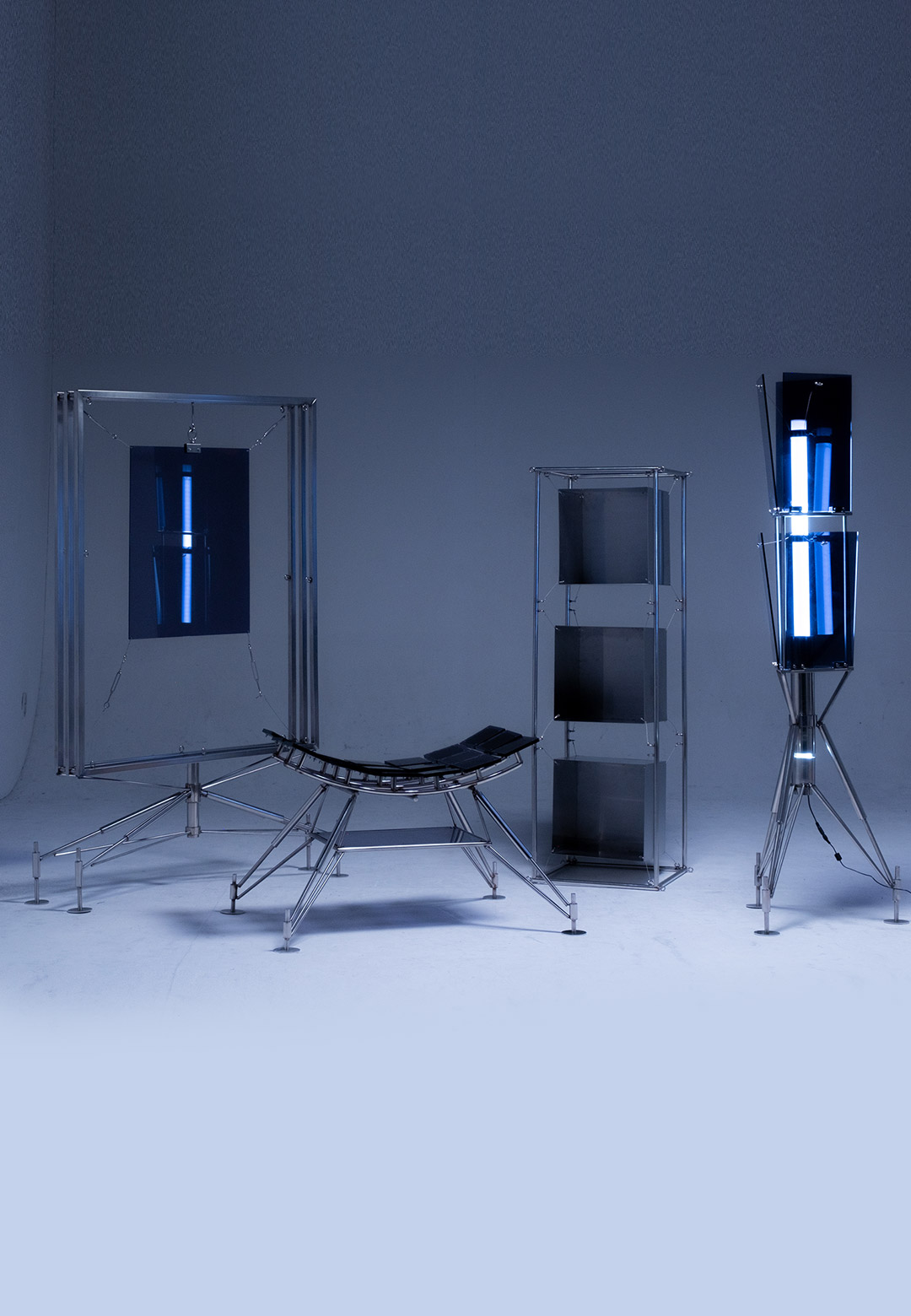A multitude of sci-fi cinematic creations have graced our digital screens and managed to weave a plausible picture of what the future holds. Technology advanced beyond comprehension, a blatantly industrial aesthetic, and artificial intelligence working at par with humans are visuals we often associate with the future. This strong association can safely be credited to the employment of these ‘futuristic’ elements time and again in filmmaking. Drawing inspiration from popular science fiction films such as Interstellar and Blade Runner 2049, Seoul-based designer Beomseok Chae envisions what a collapse of contemporary concepts and forms of furniture design might entail. In a series of furniture and smaller functional objects dubbed POST-COLLAPSE, the designer creates his own metaphor of the world to come. “I'm inspired by the various futuristic forms and structures that can be seen in movies about the near or far future,” says Chae. “I started thinking about space in the future, and it led to the POST-COLLAPSE project,” he adds.
The keyword guiding all the designs of the series is ‘POST’—the next concept that will emerge after a phenomenon. The industrial designer ponders upon the potential ‘next’ of furniture and space, realising his perceptions in the form of functional artworks. “The meaning of ‘POST’ cannot be explained only by the passage of time. It is a concept for dividing the appearance of meaningful things such as events, truths, concepts, and phenomena—before and after,” explains Chae, who is based in South Korea. His interpretations find home in POST-COLLAPSE—a collapse of contemporary design meta-saturated into artwork. The series encompasses four furniture pieces and several small designs that aim to emanate a unique presence as landmarks and draw attention to themselves in the space they inhabit.
“I looked through hundreds of images collected and analysed what shapes and structures made me feel futuristic and I developed it into a functional object by sketching those shapes,” the product designer shares. The xH-3 STORAGE and the yA-18 STOOL contribute to the furniture segment of the series. The storage module features three cubes levitating within a cuboidal metal frame. Each storage module draws the eye and becomes a medium of exhibition, highlighting storage items in ways that transcend mundane storage furniture. The stool design, on the other hand, showcases a curving seat composed of 18 squares. “It is an object that represents existence like a sculpture in living space, in which the carved top is arranged like a reflective plate of a radar to form a vanishing point,” explains Chae.
Overlapping rectangular frames create the yD-4 HANGER, another minimal medium of display. Conceived to exhibit, the hanger can show off a piece of clothing by breaking away from the existing norms and design language of hangers. The wires reaching out to the corners represent the structural tension, focussing the spotlight on the clothes and underlining the nuances of the exhibits in the frame. Six-panel angle-moving lighting design titled zS-6 STAND LIGHT adds to the assemblage. “The panels were designed from mechanical sources used in the high-tech/space industry. The pale white light that leaks through the translucent panels envelops the cold near-future space,” notes Chae.
The three smaller functional objects—the Mechanical Pencil Pot and the Multi-Tray in small and large size— complete the POST-COLLAPSE series, and are made in accordance with the design language of the former products. The small pencil holder metaphorically expresses the relationship between rocket fuel and the spaceship, an idea lucidly insinuated by its form. The trays are variable structures made of flexible wire and acrylic. All the product designs conform to a futuristic minimalism—cold metallic frames of stainless steel, repetitive components made of acrylic and polycarbonate, and clean lines that escort stark simplicity. The subsequent sculptural art transcends the inanimate realm and represents the designer’s vision of a time to come, a story. “Based on the design philosophy of expressing many concepts and stories that exist in the world in functional artwork, I wanted to talk about the near future in this project. I want to be a designer who does storytelling, not limited to materials or physical properties,” shares Chae.
Based on the POST-COLLAPSE worldview, Chae plans to design various art furniture and showcase it to the public. These products that oscillate between industrial design and minimalism bear a reminder of how art and design become solace for creative perceptions, albeit of the far future. The intricate yet sturdy silhouettes that are birthed from an analysis of the hypothetical sci-fi universe, nudge the viewer to contemplate a future one can only speculate, a time when contemporary standards perish—an era POST-COLLAPSE.






 Sign in with email
Sign in with email








What do you think?